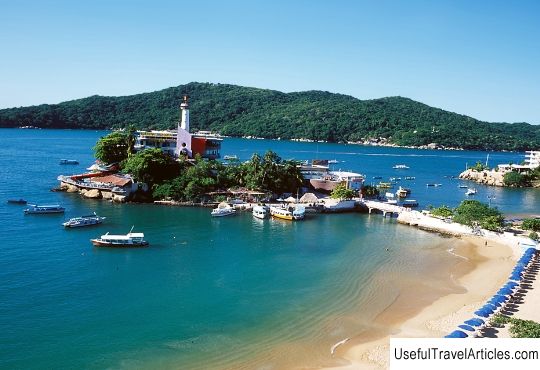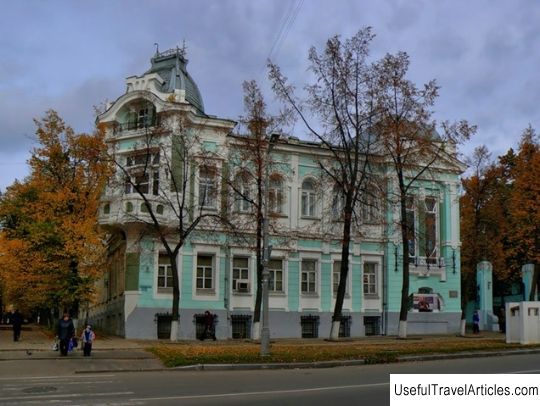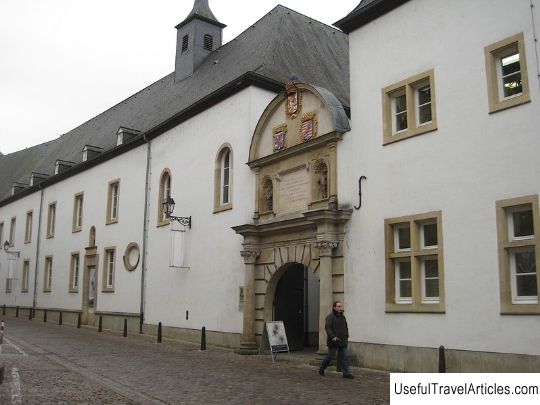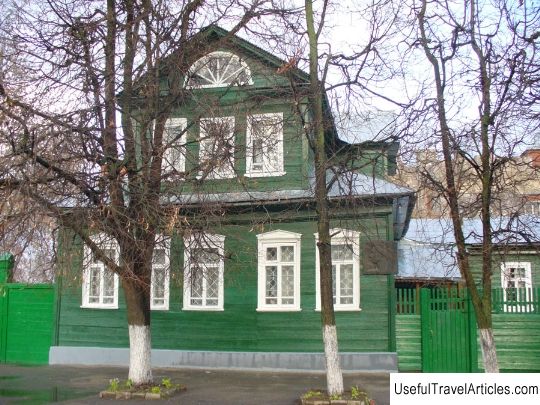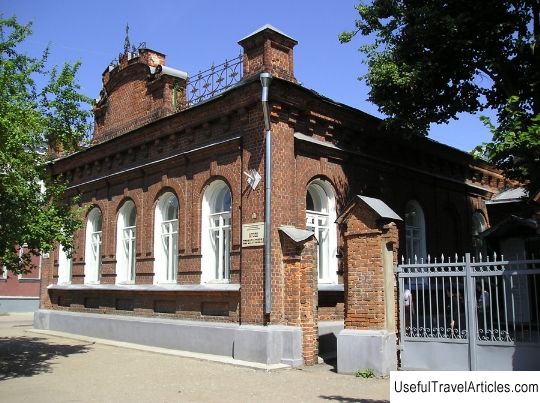Stone Museum ”Litos-KLIO” description and photo - Russia - Golden Ring: Ivanovo
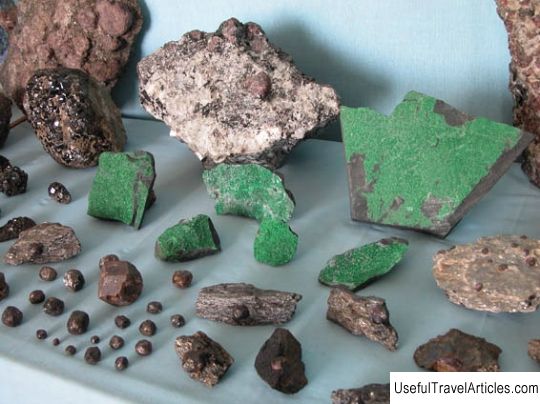
Litos-KLIO Stone Museum description and photos - Russia - Golden Ring: Ivanovo. Detailed information about the attraction. Description, photos and a map showing the nearest significant objects. Photo and descriptionStone Museum " Litos-KLIO " Is an educational structural unit of the Center for Children's Creativity in the city of Ivanovo №4 The museum has two dates of birth. In 1986, the Club of fans of the history of the Fatherland, or KLIO for short, was created, which brought together children who are fond of history, local history, archeology, toponymy, etc. In 1990, on the basis of KLIO, the Litos-KLIO school-museum was organized. The museum did not refuse to study history, but began to look at it as if "through a stone" ("lithos" - stone, Greek), the sphere of its interests expanded: gemology, paleontology, mineralogy, geomorphology, history of stone culture, geology, astromineralogy ... The concept of the school-museum " Litos-KLIO " in 1991 at the city auction of pedagogical ideas took 2nd place, and in 1992 the school received the status of an experimental site and its own premises with an area of about 500 sq. m. It was from this time that the museum began to receive its first visitors, which are the result of twenty-six field seasons with many paleontological and geological expeditions, including the Vitim Highlands, Eastern Sayans, Baikal, the Polar and Southern Urals, the Mongolian border, Khibiny, Northern Timan, Barents and the White Sea, Onega and Ladoga lakes, the Caucasus, Crimea and other places. Since 2010, when the museum moved to a new building, a project to create a natural science museum and educational center on the basis of a school-museum was launched ... The Museum of Stone for Ivanov is an unusual phenomenon, as this region is not very rich in sources of stone. The museum displays a wide range of stone products: from a stone ax to a cobblestone, which is the weapon of the proletariat, the revolutionary argument of the Ivanovo workers. Today the museum has five halls, where more than 3 thousand exhibits are presented, 1.5 thousand exhibits are in the museum's storerooms. Among them there are more than 500 mineral species, as well as paleontological, historical, archaeological, local history collections. In addition to the historical biography, the museum's exposition also reflects the geological and mineralogical history of the stone. Stone is an essential link between the `` inanimate '' and living matter, between the history of the planet and the history of mankind, between the macro- and microcosm, which helps a person to find the harmony of the world. All stones, presented here - almandine, malachite, staurolite, rock crystal, tourmaline, selenite, corundum, eudialyte - collected by the teachers and students of Litos-KLIO during mountain climbing, river rafting, sailing by sea, working in mines, caves, adits. We can say that the thirst for stone opened the world to us. And it all began with the study of literature, endless curiosity. In 1988, during the archaeological excavations of Saray-Batu, the capital of the Golden Horde, three finds were discovered: an amethyst blank, a turquoise bead, and an amber cabochon. It was then that the priority direction of development of the school-museum was chosen. These are, first of all, mineralogy, geology and paleontology in an indissoluble union with archeology, history, local history. The stone was initially considered by the founders of the museum in a cultural and historical aspect. And this was accordingly reflected in the choice of the name of the museum, in the decision of its expositions, in the choice of routes for expeditions and excursion work. To find jade, members of the school-museum went to the legendary Ospin-Daban deposit in the Eastern Sayan Mountains. Almandines were mined in the ancient tunnels excavations laid by the monks of the Valaam Monastery. Amethyst is taken from Lake Onega, on the Wolf Island, from there it was delivered to the court of Empress Catherine II. In addition to collecting minerals, seids of the Kola Peninsula, Zalavruga petroglyphs, stone labyrinths of the White Sea islands, sacred obs and burkhans of Transbaikalia, dolmens of the Caucasus, megaliths of the Ivanovo region are studied. Tens of thousands of visitors got to know the expositions. The stone has become an ideal museum object, whose language is clear to everyone. Any educated person needs a certain mineralogical minimum of knowledge about stones (the names of several dozen of the most famous gems that have left their mark on history and culture). Without this information baggage, without knowledge of antiquity, biblical legends, much in history and culture will be incomprehensible. Such knowledge helps to overcome the confusion in front of the windows of jewelry stores and will teach you how to distinguish real natural stone from fakes. biblical legends much in history and culture will be incomprehensible. Such knowledge helps to overcome the confusion in front of the windows of jewelry stores and will teach you how to distinguish real natural stone from fakes. biblical legends much in history and culture will be incomprehensible. Such knowledge helps to overcome the confusion in front of the windows of jewelry stores and will teach you how to distinguish real natural stone from fakes.       We also recommend reading Troglodyte house description and photos - Tunisia: Matmata Topic: Stone Museum ”Litos-KLIO” description and photo - Russia - Golden Ring: Ivanovo. |
